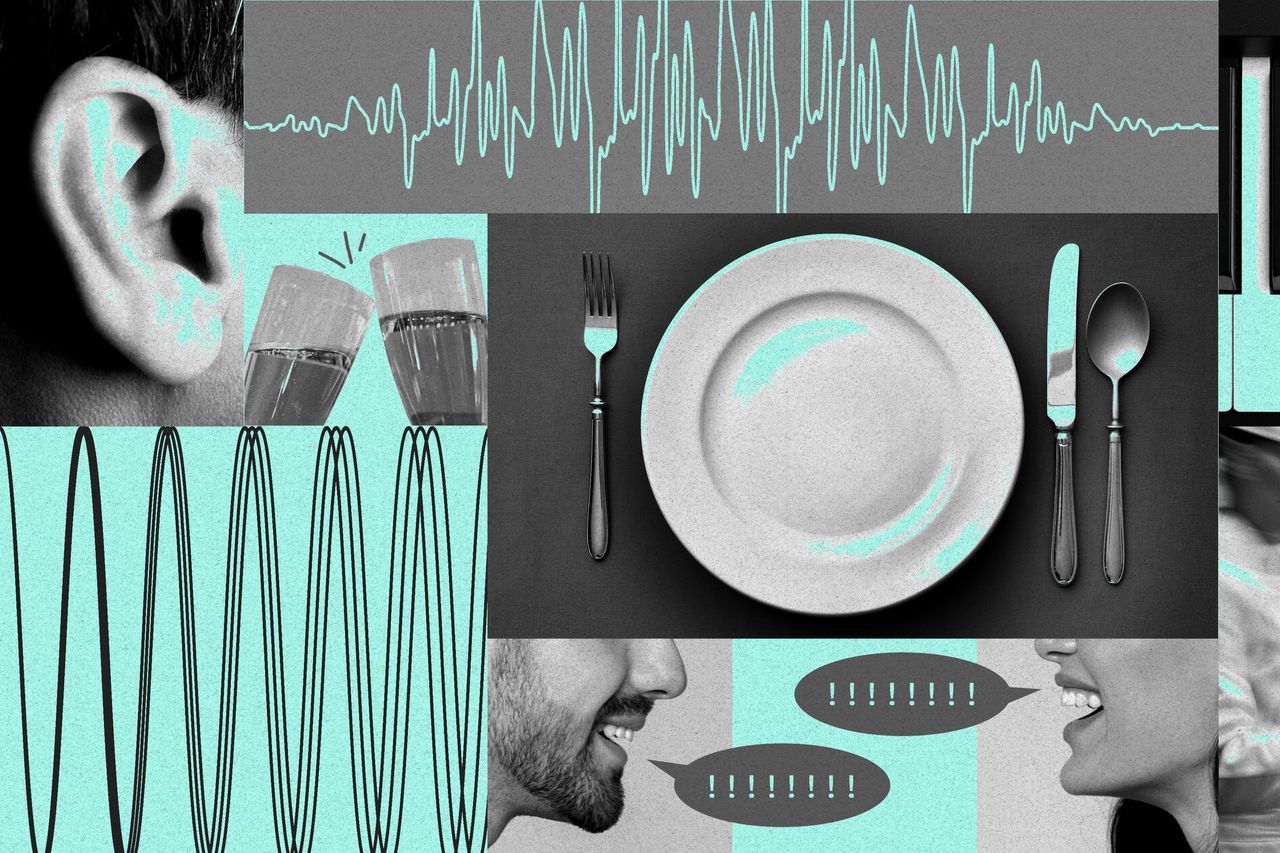Restaurant guests may have luck scoring a corner booth or procuring a steak cooked to their liking. But one request feels like a moonshot: ambience that strikes a perfect balance between riotous and dead quiet.
Diners say clanking dishes, larger parties and clubby beats can be a distraction when eating out. Entering a hushed dining room is often just as upsetting. Some call ahead of time to investigate noise levels. Others leave before being seated.
Restaurant owners think they know something about their diners that their diners might not fully know about themselves: They enjoy busy spaces more than they realize. Customers tend to have more fun in louder environments. High-energy dining rooms are more likely to turn diners into repeat clients, they say.
At San Francisco’s Che Fico, the playlist is timed to the ebb and flow of the evening. With tables turning over several times each night, the music is loudest when the restaurant is at its fullest, according to co-owner Matt Brewer. “There’s a crescendo that matches the turns,” he says.
Hitting the sweet spot
He finds that guests who enjoy the sound levels tend to enjoy the restaurant more. The Italian restaurant aims to have music loud enough so neighboring tables can’t hear each other speak, but can still enjoy the soundtrack. Hitting the sweet spot makes guests more likely to become repeat guests, with some lingering over drinks.
“When people are feeling more energy, they tend to order another cocktail,” he adds.
Joey Tanzillo, a 34-year-old Chicago real-estate agent, prefers “vibey” restaurants that have lively bar scenes and feel “like a very Miami thing.” Still, he says, it takes “trial and error.”
He looks for spots where the music doesn’t interfere with the conversation, especially during business dinners. Yet, the louder hum of a restaurant can be critical for some outings, including on a date.
“I don’t want it where it is awkward, quiet pauses,” he says. “You need background noise to fill the gaps.”
Justine Reichman in Larkspur, Calif., avoids restaurants that feel like she’s “in the middle of a club.” She doesn’t want to strain to hear her companions. But she still wants the ambience to be somewhat energized.
Often, she’ll call ahead to ask, check reviews or inquire about a quieter table.
If she’s eating at a louder restaurant, she’ll go with fewer people. And when she does enter a restaurant that feels too noisy, she’ll wait to see what others in her party think of the atmosphere before sitting down. She’s not afraid of being “fussy,” she says.
“Sometimes you definitely have to walk out,” says Reichman, 51, a podcast host.
The decibel dance
“Up until three or four years ago, the sound aspect of a restaurant was never truly considered. It was the more the merrier,” says Sean Saladino, who runs a Miami-based architecture and design firm specializing in restaurants.
Improved acoustic materials that mimic the look of wood or well-designed curtains along with more affordable sound systems are now more popular, he says. They allow for more ambient noise without drowning out conversation.
Sound experts say acoustical problems are more difficult to predict than restaurateurs realize.
For one, it’s impossible to predict the sound challenges of a space before it fills on a weekend night. And many places don’t account for how loud people start to speak—or yell—above the music or other noise, what’s known as the Lombard reflex, says Wade Bray, vice president at Head Acoustics based in Brighton, Mich.
Add that to sound bouncing off hard surfaces, including ceilings, and noise levels can create an uncomfortable atmosphere that’s tough to manage—even with fewer tables.
But, “there’s a good kind of bustle,” Bray says.
‘We’ll deal with it’
Diners such as Robert Goddard, an institutional equity trader in Mill Valley, Calif., are on the search for that ideal bustle.
He says his preference for restaurants that are “a bit quieter but not too quiet” has increased over time. He doesn’t want annoyingly loud, but he does want to walk into a place that seems popular.
“Most of the time the places we go tend to be on the louder side—on a scale of 10 maybe a seven on the loud scale,” says Goddard, 62.
Yet, occasionally, he and his wife will be out with friends and wind up at a 10.
“If we really like those people, we’ll deal with it,” he says.
A restaurant not a ‘funeral parlor’
At Claud, a New York restaurant, the owners spent weeks walking around measuring the decibels in the room with their smartphones to gauge noise levels throughout meal service.
About two months after opening in 2022, the restaurant invested in acoustical treatments. Along with curtains and carpets, they treated the ceiling with foamlike materials meant to absorb sound. While two-person tables are placed near each other, the restaurant’s largest table is purposely off to the side and divided by fluted glass to keep conversations from traveling.
Though some guests are still “super loud,” the restaurant is roughly 10% quieter than when it opened, owner Chase Sinzer says. “It’s never perfect, so you do your absolute best.”
In 2023, audio data from the app SoundPrint found that 63% of restaurants are too loud for a conversation, compared with 67% in 2019. The data tracked restaurants that measured above 75 decibels and included more than 25,000 measurements.
Gallaghers, a steakhouse with a New York and Florida location, tries to embrace the sounds while making sure it is quiet enough for guests to dine together without shouting. Guests who enter want to know that others are relaxed and having fun rather than feeling like it is serious and quiet.
“You want to hear silverware being put down on tables and glasses clinking,” owner Dean Poll says. “You don’t want to walk into a restaurant that sounds like a funeral parlor.”



